Scientists Discover a New Signaling Pathway and Design a Novel Drug for Liver Fibrosis
Health & Behavior
By:
Published Date
By:
Share This:
Seeking healthy lifestyle changes, Colin Jackson started running in 2014. He ran his first-ever mile in 28:47. He finished last in his first marathon.
His pace, though, was irrelevant. The drive needed to complete 26.2 miles hooked him.
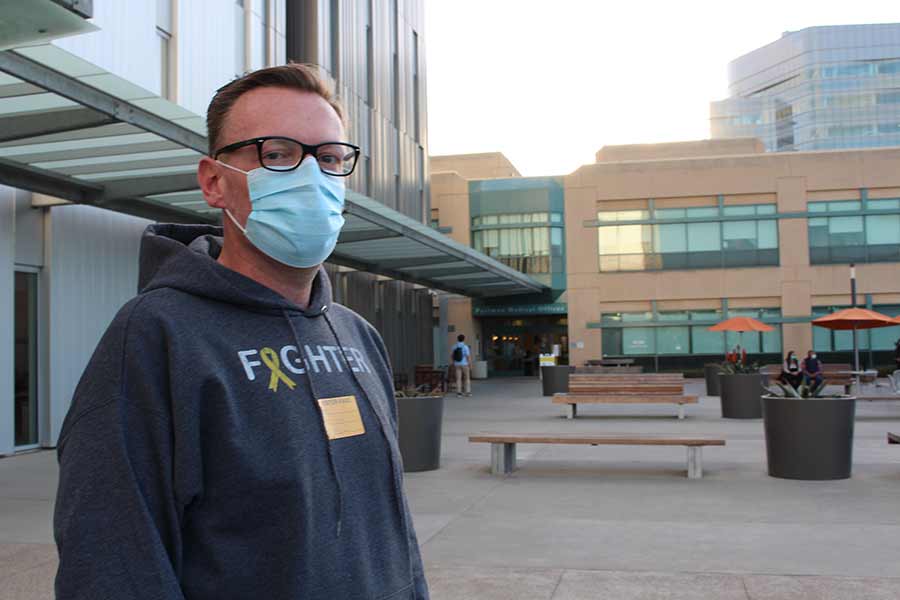
During a recent visit to the UC San Diego Health campus in La Jolla, Colin Jackson reflected on the race of his life—a diagnosis of a rare type of cancer that started in his thighbone.
“I was morbidly obese. My doctor said, ‘You need to make a change if you want to see your next birthday,’” recalls Jackson. “Running a marathon changed my life. It wasn’t just about trying to maintain the weight loss, it also taught me how to battle the thoughts that plagued my mind in order to overcome.”
Jackson had no idea that the lessons learned over the years while running nine marathons would become his saving grace in 2019, when he was diagnosed with chondrosarcoma.
A rare cancer, chondrosarcoma is a bone sarcoma. It usually occurs in the pelvis, shoulder, ribs or at the ends of the long bones in the arms and legs. It is most common in people over the age of 40. Jackson was 37 when he was diagnosed.
“I remember lying in my room at Jacobs Medical Center, bed-bound and unable to move after the surgery to remove the tumor and reconstruct my hip, and thinking ‘I will complete a marathon again. It will be tough to get there, but it’s not impossible.”
In 2018, Jackson had a goal of running three marathons, bringing up the rear to support runners who needed a little encouragement in the last few miles.
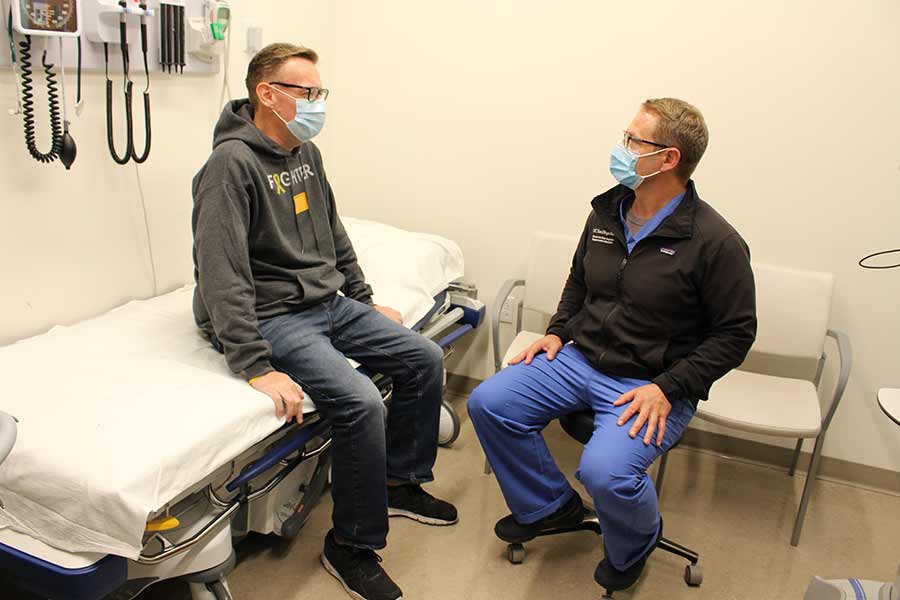
Colin Jackson credits pain management specialists, like Kenneth Halter, for recognizing that he was not suffering from IT band syndrome and that he needed to receive advanced imaging for an accurate diagnosis.
One week after completing the second race of the year, Jackson suffered a skull fracture and a broken ankle after he was attacked while helping people experiencing homelessness in his neighborhood. The injuries left him unable to complete the quest for a third marathon.
For more than a year, Jackson repeatedly asked his doctors if the pain radiating down his right leg was normal. They insisted that, because of the ankle injury and subsequent surgery, he suffered from iliotibial (IT) band syndrome—a painful overuse injury that occurs when connective tissues rub against the thighbone.
Hoping to offer some relief, his doctors removed the plate that had been inserted to reinforce the broken ankle. But the pain persisted.
Jackson requested referral to UC San Diego Health, which is recognized as a Clinical Center of Excellence in Pain Management by the American Pain Society. Immediately, the team recognized that Jackson’s condition was much worse than an overuse injury. After a series of scans, he was referred to Moores Cancer Center at UC San Diego Health.
“Colin presented with a large mass in his hip, consistent with a bone sarcoma, that had been slowly growing over an unknown period of time,” said Dr. James Flint, a UC San Diego Health orthopedic surgeon who specializes in treating benign and malignant soft-tissue and bone tumors. “Colin’s case is unique. He is a relatively young patient. Having to perform an endoprosthetic hip replacement—including bone, joint and soft tissue reconstruction—at his age is a big deal.”
Flint and an expert operative team removed the top portion of Jackson’s femur, part of the hip capsule and most of the gluteal muscles that attach to the femur.
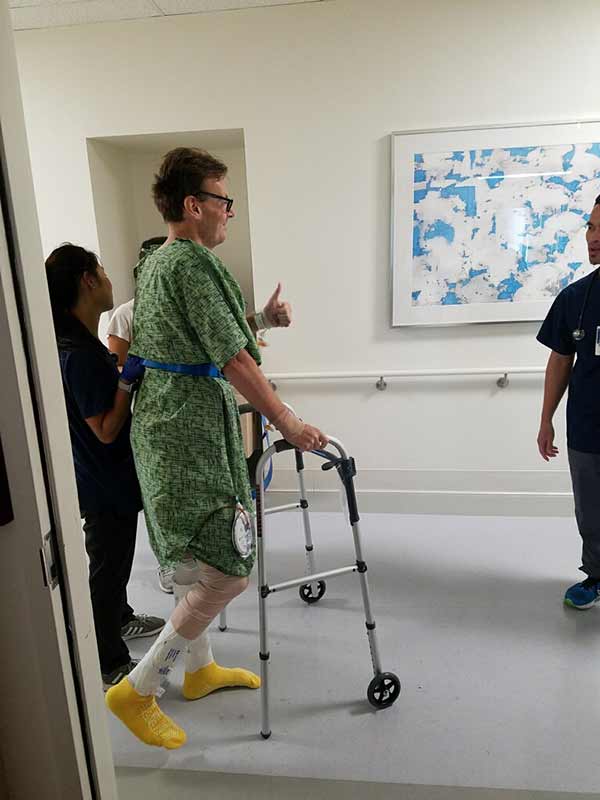
To remove as much of Colin Jackson’s tumor as possible, his surgeon James Flint, had to remove and replace the top portion of Jackson’s femur, the hip joint and surrounding soft tissue. Rehabilitation was necessary to get Jackson walking again.
It is a significant loss of muscle, and left his hip joint at higher risk of dislocating. Jackson’s running career came to a crashing halt.
“I’m fortunate that they were able to save my leg,” said Jackson. “I am thankful that UC San Diego Health has specialists in sarcomas so that I did not have to travel outside of the region for treatment.”
Flint, Dr. Frank Chiarappa, an orthopedic oncologist, and Dr. Susan Bukata, an orthopedic surgeon, are sarcoma experts at UC San Diego Health, the region's only medical center recognized for specialty expertise in sarcomas by the Sarcoma Foundation of America and Sarcoma Alliance. They treat patients with sarcomas regularly. Their experience allows them to offer the highest level of specialized care for this complex patient population.
“It is critically important when treating this disease to see a sarcoma specialist,” said Flint. “If a patient doesn’t receive the right surgery the first time, it is more likely that complications occur, more complex revision surgery is required, or this cancer becomes metastatic or recurs.”
“I am not going to let cancer or not having my own hip, femur or glute muscles deter me from doing what I love,” insists Jackson.
After the surgery to remove the tumor and reconstruct his femur and hip joint, Jackson began the rehabilitation process. One year ago, he needed a walker to walk one mile in three hours.
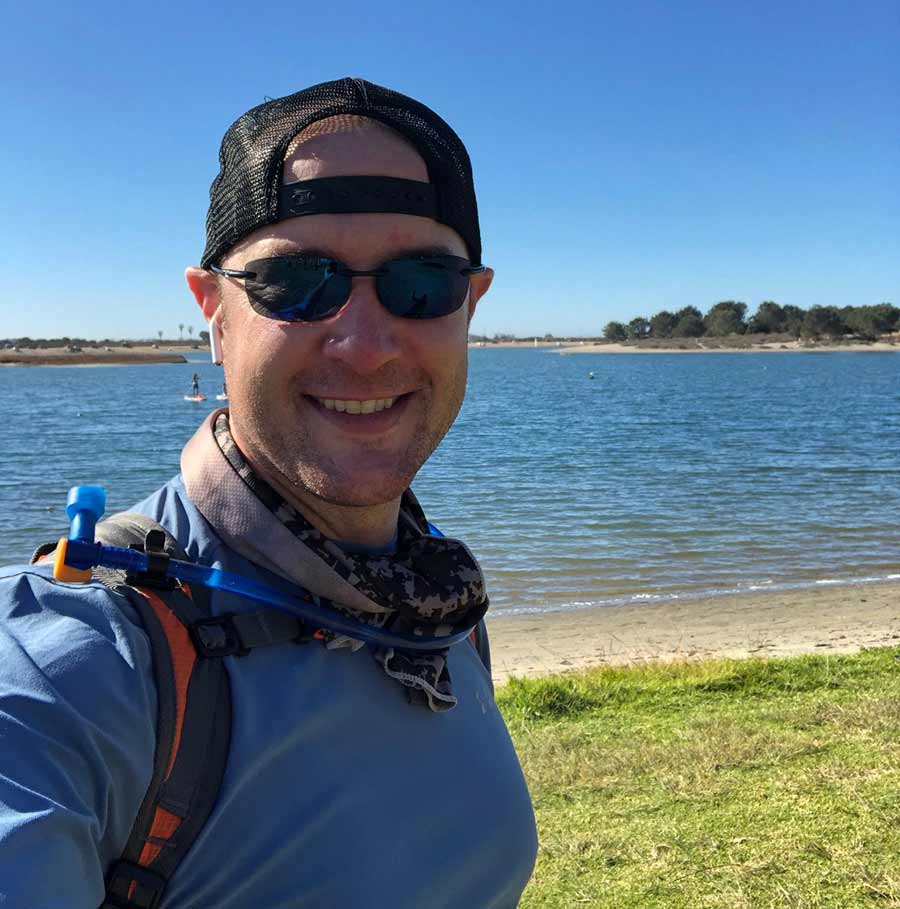
Because of the pandemic and public health guidelines, Dr. James Flint was not able to travel to Arizona to walk a marathon alongside Colin Jackson. Instead, Flint walked two loops around Mission Bay at the same time as Jackson walked in Arizona, checking in by video chat and sending photos along the way.
Undaunted, Jackson set a goal to complete the Rock ‘n’ Roll Arizona marathon in January, even if it meant walking.
Flint had reservations. People who undergo these types of reconstructions do not typically perform such physically demanding activities, but he understood how important it was to Jackson to tackle 26.2 miles.
“Young people, like Colin, are highly motivated to return to normal activity,” said Flint. “When we care for young people, we want to choose the best procedure that allows them to be as active as they want to be under the circumstances. Colin took a long time to bulk up the muscles he has left to be able to do what he is doing now.”
Because of the COVID-19 pandemic, the marathon he had signed up for was postponed. Still, on January 17, 2021 Jackson retraced the steps of his first marathon, traversing the Arizona cities of Phoenix, Scottsdale and Tempe. His parents drove a support vehicle and his friends walked the 12 hours, 32 minutes and 32 seconds it took him to complete his marathon.
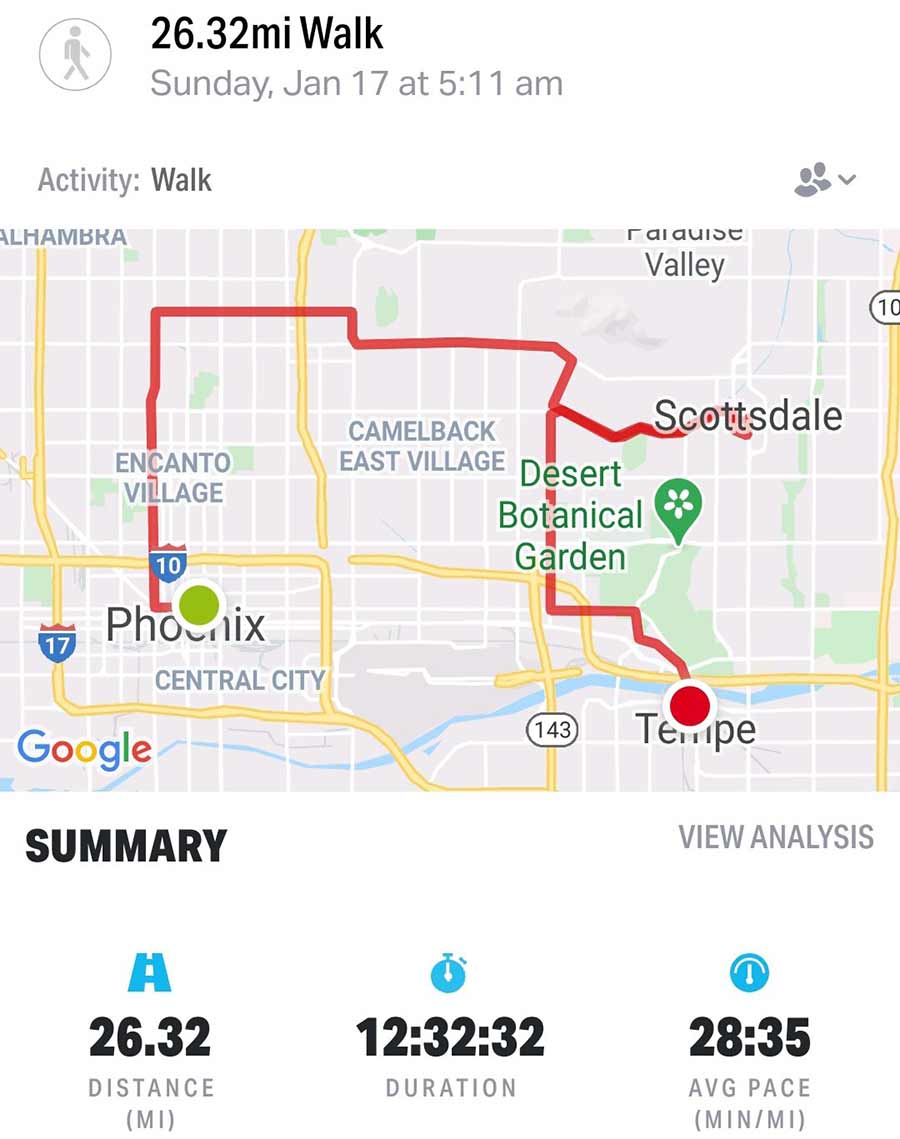
Colin Jackson promised himself that, despite an endoprosthetic hip replacement, he would complete another marathon. He chose to come full circle and walk in Arizona, the site of the first ever marathon he completed.
“It’s scary what the body is able to do with what I have—what’s real and what’s prosthetic,” marveled Jackson after he finished. “It was no more difficult than my cancer journey.”
Flint, who greatly admires Jackson’s resolve, was hoping to walk alongside his patient, but his schedule and the pandemic prohibited him from traveling to Arizona.
Instead, Flint laced up his shoes and joined Jackson virtually. While Jackson walked in Arizona, Flint walked his marathon around San Diego’s Mission Bay. Surgeon and patient checked in by video chat throughout the day sharing smiles and encouraging one another along the way.
“It was very cool to have Dr. Flint go through the emotions of 26.2 miles with me,” said Jackson. “I’m still doing what I love. I’m just doing it differently. It changed how I move, but not how I live life.”
Share This:
Keep up with all the latest from UC San Diego. Subscribe to the newsletter today.